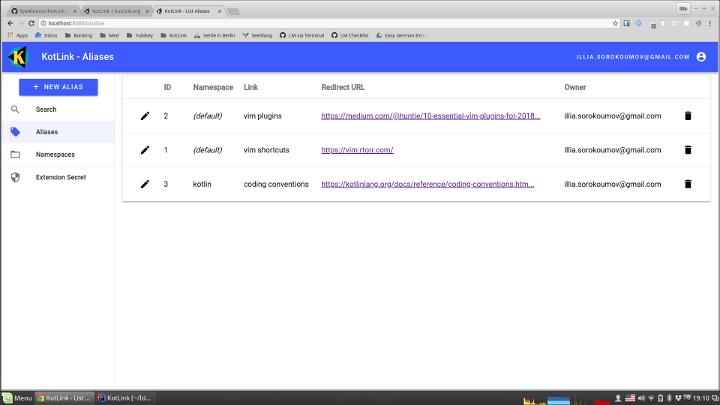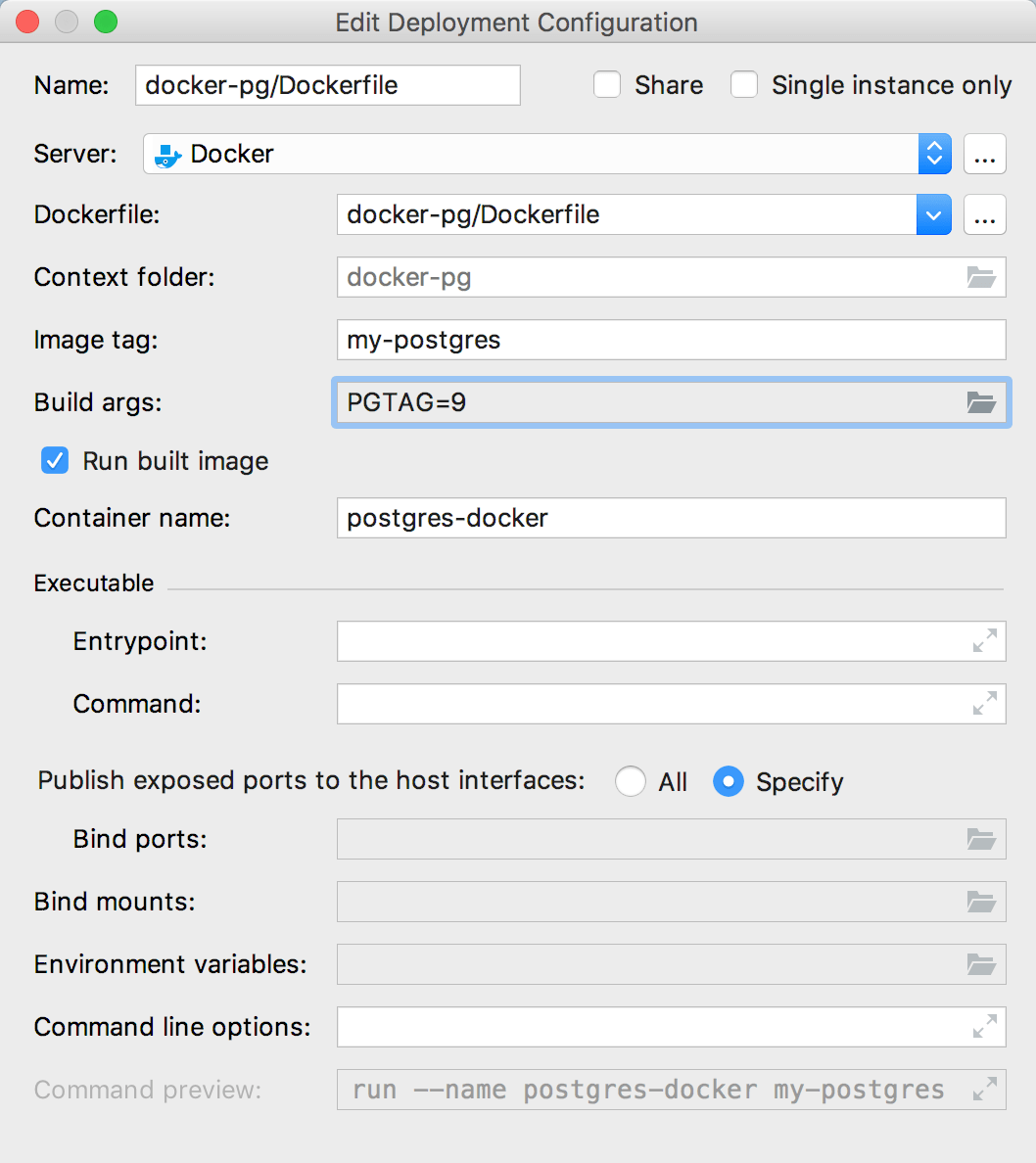Docker Postgres Install Extension
These instructions are for PostgreSQL 9.1 and higher, PostGIS 2.2 and higher that is compiled with raster support.Note: if you have postgis, without raster support, you can not use CREATE EXTENSION. Refer to PostGIS install.
- Docker Postgres Install Extension Chrome
- Docker Postgres Install Extension Tutorial
- Docker Postgres Install Extensions
I have check this path file do exist. But docker seems to ignore it. I ended up with removing postgres installation which has been done in past locally. Now my docker one exist. It is running fine but creating postgis extension always fails. Docker-compose postgres: image: postgres:12 restart: always ports: - '5432:5432' volumes. Docker stop postgres pgadmin4 docker rm postgres pgadmin4 docker volume rm postgres pgadmin4 docker network rm pgnetwork Conclusion. Docker makes it very easy to test things in your local development environment, though, based on the container images you are using, there may be a bit of set up work.
Enabling PostGIS
PostGIS is an optional extension that must be enabled in each database you want to use it in before you can use it. Installing the software is just the first step.DO NOT INSTALL it in the database called postgres.
Connect to your database with psql or PgAdmin. Run the following SQL.You need only install the features you want:
Upgrading PostGIS
To upgrade PostGIS, you first have to install the latest binaries and then upgrade each database you have PostGIS installed in
For example connect to database you want to upgrade and if you just installed binaries for 2.1.3You can upgrade from 2.0 to 2.1, 2.2 et.c using this approach. To go from 1.* to 2.* you need to do a hard upgrade.Refer to PostGIS install for more extensive instructions.Note: that as of PostGIS 2.1.3 and PostGIS 2.0.6, you need to set environment variables to get full features.

or to a specific version
Spatial SQL
See the documentation for more guidance.
The release page has pre-compiled binaries for Mac OS X, Windows, Linux and FreeBSD .The Linux binary is a static executable that can be run on any Linux distribution.
If you use macOS Homebrew, then you can install PostgREST from the official repo.
If you use FreeBSD, then you can install PostgREST from the official ports.
If you use Arch Linux, then you can install PostgREST from the official repo.
If you use Nix, then you can install PostgREST from nixpkgs.
If you use Windows, you can install PostgREST using Chocolatey or Scoop.
When a pre-built binary does not exist for your system you can build the project from source.
Running¶
If you downloaded PostgREST from the release page, first extract the compressed file to obtain the executable.
Now you can run postgrest with the --help flag to see usage instructions:
The PostgREST server reads a configuration file as its only argument:
For a complete reference of the configuration file, see Configuration. Download macos mavericks installer.
Note
If you see a dialog box like this on Windows, it may be that the pg_config program is not in your system path.
It usually lives in C:ProgramFilesPostgreSQL<version>bin. See this article about how to modify the system path.
To test that the system path is set correctly, run pg_config from the command line. You should see it output a list of paths.
To use PostgREST you will need an underlying database. We require PostgreSQL 9.4 or greater, but recommend at least 9.5 for row-level security features.You can use something like Amazon RDS but installing your own locally is cheaper and more convenient for development.
You can get the official PostgREST Docker image with:
The image consults an internal /etc/postgrest.conf file. To customize this file you can either mount a replacement configuration file into the container, or use environment variables. The environment variables will be interpolated into the default config file.

These variables match the options shown in our Configuration section, except they are capitalized, have a PGRST_ prefix, and use underscores. To get a list of the available environment variables, run this:
You can also specify a config file by mounting the file to the container:
There are two ways to run the PostgREST container: with an existing external database, or through docker-compose.
Docker compose install ubuntu 14.04. The first way to run PostgREST in Docker is to connect it to an existing native database on the host.
The database connection string above is just an example. Adjust the role and password as necessary. You may need to edit PostgreSQL’s pg_hba.conf to grant the user local login access.
Note
Docker on Mac does not support the --net=host flag. Instead you’ll need to create an IP address alias to the host. Requests for the IP address from inside the container are unable to resolve and fall back to resolution by the host.
Docker Postgres Install Extension Chrome
You should then use 10.0.0.10 as the host in your database connection string. Also remember to include the IP address in the listen_address within postgresql.conf. For instance:
Docker Postgres Install Extension Tutorial
You might also need to add a new IPv4 local connection within pg_hba.conf. For instance:
To avoid having to install the database at all, you can run both it and the server in containers and link them together with docker-compose. Use this configuration:
Go into the directory where you saved this file and run docker-composeup. You will see the logs of both the database and PostgREST, and be able to access the latter on port 3000.

Docker Postgres Install Extensions
If you want to have a visual overview of your API in your browser you can add swagger-ui to your docker-compose.yml:
With this you can see the swagger-ui in your browser on port 8080.
Assuming your making modifications locally and then pushing to GitHub, it’s easy to deploy to Heroku.
- Create a new app on Heroku
- In Settings add the following buildpack
https://github.com/PostgREST/postgrest-heroku - Add the require Config Vars in Heroku (see https://github.com/PostgREST/postgrest/blob/master/app.json#L7-L57 for more details)
- Modify your postgrest.conf file as required to match your Config Vars in Heroku
- Create your
Procfileand add./env-to-config./postgrestpostgrest.conf - Push your changes to GitHub
- Set Heroku to automatically deploy from Master and then manually deploy the branch for the first build
